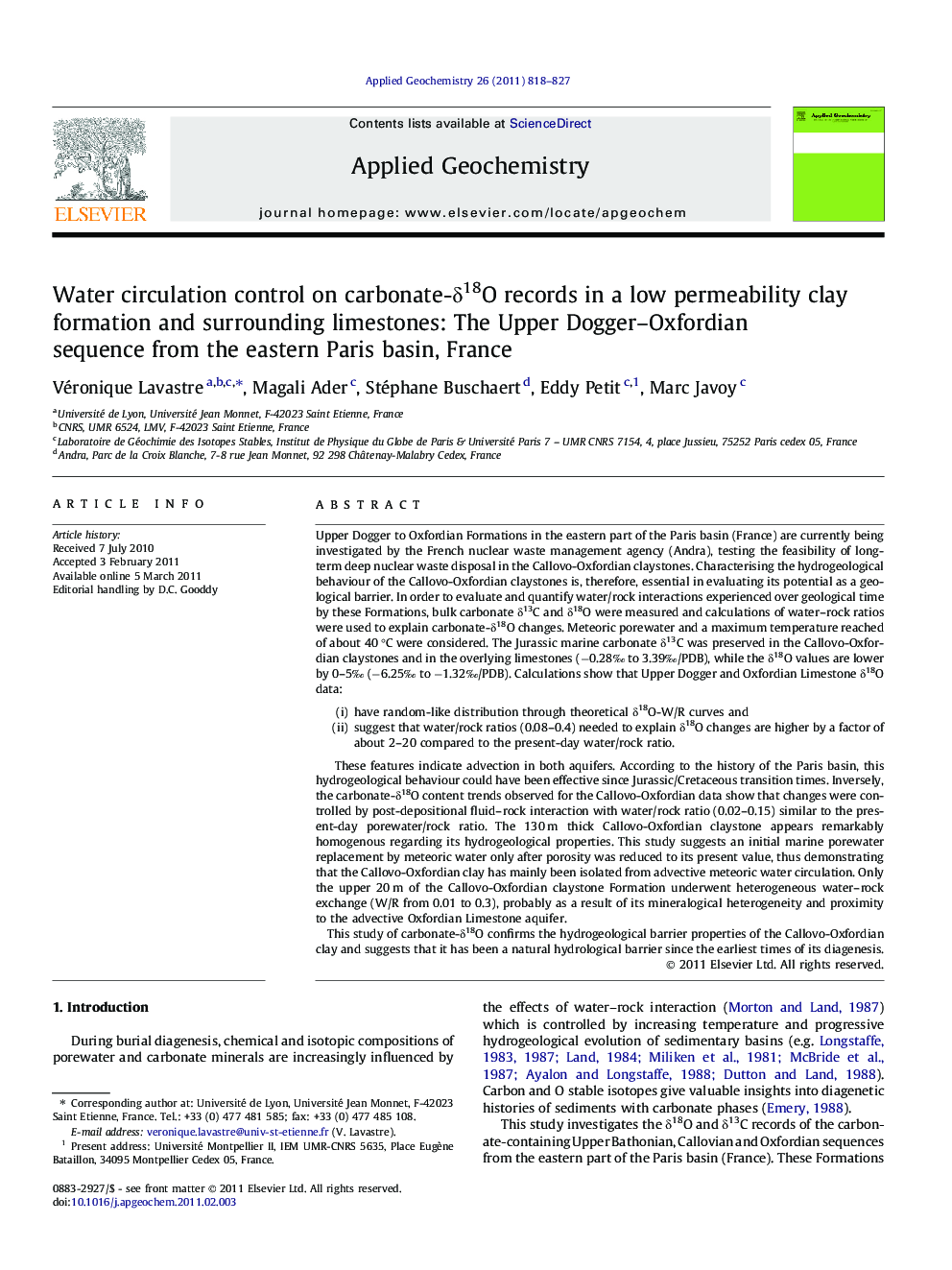| Article ID | Journal | Published Year | Pages | File Type |
|---|---|---|---|---|
| 6335492 | Applied Geochemistry | 2011 | 10 Pages |
Upper Dogger to Oxfordian Formations in the eastern part of the Paris basin (France) are currently being investigated by the French nuclear waste management agency (Andra), testing the feasibility of long-term deep nuclear waste disposal in the Callovo-Oxfordian claystones. Characterising the hydrogeological behaviour of the Callovo-Oxfordian claystones is, therefore, essential in evaluating its potential as a geological barrier. In order to evaluate and quantify water/rock interactions experienced over geological time by these Formations, bulk carbonate δ13C and δ18O were measured and calculations of water-rock ratios were used to explain carbonate-δ18O changes. Meteoric porewater and a maximum temperature reached of about 40 °C were considered. The Jurassic marine carbonate δ13C was preserved in the Callovo-Oxfordian claystones and in the overlying limestones (â0.28â° to 3.39â°/PDB), while the δ18O values are lower by 0-5â° (â6.25â° to â1.32â°/PDB). Calculations show that Upper Dogger and Oxfordian Limestone δ18O data:(i)have random-like distribution through theoretical δ18O-W/R curves and(ii)suggest that water/rock ratios (0.08-0.4) needed to explain δ18O changes are higher by a factor of about 2-20 compared to the present-day water/rock ratio.These features indicate advection in both aquifers. According to the history of the Paris basin, this hydrogeological behaviour could have been effective since Jurassic/Cretaceous transition times. Inversely, the carbonate-δ18O content trends observed for the Callovo-Oxfordian data show that changes were controlled by post-depositional fluid-rock interaction with water/rock ratio (0.02-0.15) similar to the present-day porewater/rock ratio. The 130 m thick Callovo-Oxfordian claystone appears remarkably homogenous regarding its hydrogeological properties. This study suggests an initial marine porewater replacement by meteoric water only after porosity was reduced to its present value, thus demonstrating that the Callovo-Oxfordian clay has mainly been isolated from advective meteoric water circulation. Only the upper 20 m of the Callovo-Oxfordian claystone Formation underwent heterogeneous water-rock exchange (W/R from 0.01 to 0.3), probably as a result of its mineralogical heterogeneity and proximity to the advective Oxfordian Limestone aquifer.This study of carbonate-δ18O confirms the hydrogeological barrier properties of the Callovo-Oxfordian clay and suggests that it has been a natural hydrological barrier since the earliest times of its diagenesis.
Research highlights⺠Up. Dog./Oxf. sequence is investigated for radioactive waste disposal feasibilities. ⺠Marine carbonates suffered isotopic exchanges with meteoric water. ⺠Modelling shows that very low W/R ratio can explain isotopic changes in clay layer. ⺠Higher W/R ratio are needed to reach isotopic changes in carbonated layers. ⺠Confirmed barrier property of clay layer was probably reached during early burial.
